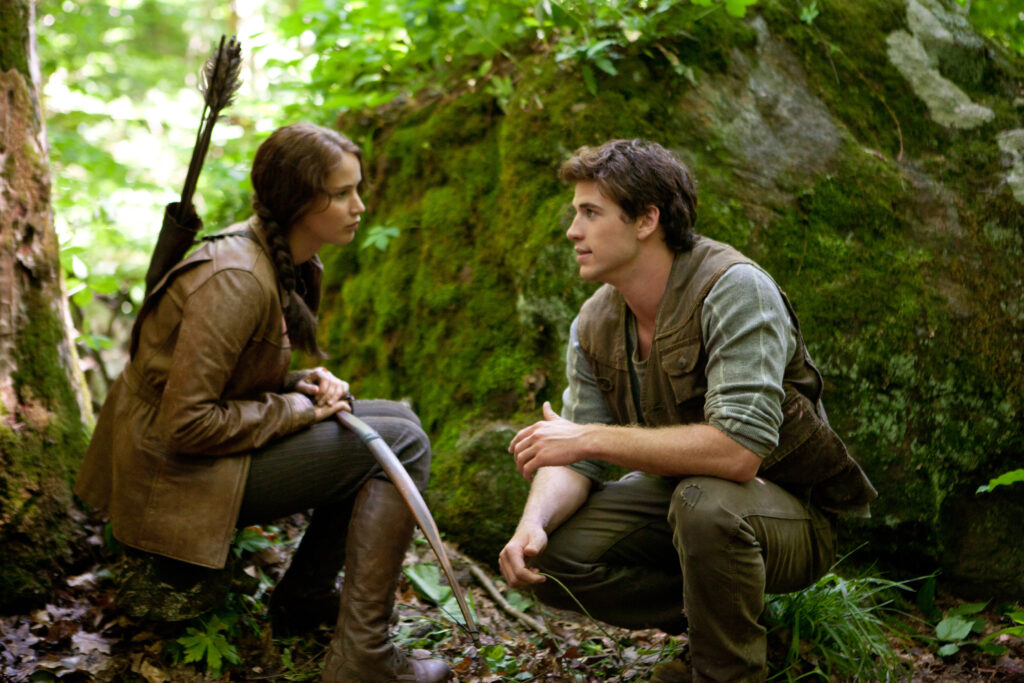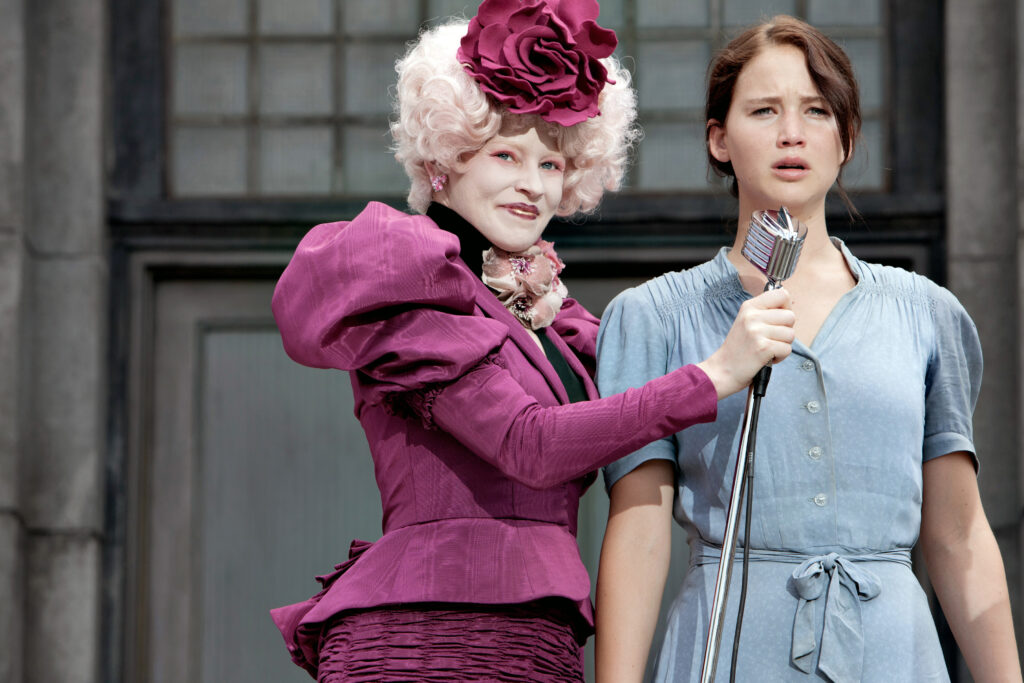Retrospective: The Legacy of The Hunger Games
Written by on Oct 06, 2023 4:28 PM
It’s hard to imagine contemporary pop culture without one of the most iconic young adult (YA) series of all time, The Hunger Games. Over 10 years ago, no one knew the name Katniss Everdeen or the Mockingjay salute, and no one had heard the famous line “may the odds be ever in your favor.” This all changed when Suzanne Collins published the first book in the series and the subsequent movies released in theaters.

The books cleared the way for the dystopian YA tsunami, selling over 675 million copies at release [1]. The sleek cover, relatable and inspiring characters, and exhilarating plot captivated young readers. This wave of excitement translated perfectly on screen, and in 2012, The Hunger Games broke records at the box office, grossing $152 million in its opening weekend [2]. Audiences were drawn into the world of Panem, while Jennifer Lawrence’s performance as Katniss won over both readers’ and viewers’ hearts.
Both the book and the films pushed the YA genre in a new direction, subverting our expectations and introducing us to a future that acts as a parable for the present. To celebrate the film’s return to theaters nationwide, we are diving into the legacy of The Hunger Games.
Arguably, one of the most defining elements of The Hunger Games is the heroine Katniss Everdeen. Born in the poorest district in Panem, District 12, the 16-year-old acts as a provider for her family throughout the series. Initially, she hunts in the forest with her bow and arrow (her signature weapon), feeding her starving family. That is until her sister Prim is selected as a tribute for the hunger games, and Katniss volunteers in her place without hesitation. This moment struck a chord with viewers, who had not seen a young woman step up and be a protector in the YA adult sphere [3].

Before Katniss and The Hunger Games, audiences were used to the romance-driven character archetypes in other successful young adult franchises. While romance is a big part of The Hunger Games, it isn’t the motivating factor that drew many young women into the series. They wanted a brave, intelligent, and dangerous protagonist like Katniss over The Twilight Saga’s “doe-eyed” Bella, who gave up everything in the name of love.
In addition, Katniss’ humble beginnings fueled her relatability with audiences. Even as the reluctant hero, she sparked the need for change and sacrificed almost everything for the rebellion, all without unattainable or unrelatable superpowers; she was human.
The generation of young adults that grew up during The Hunger Games’ popularity were nicknamed Generation K, after Katniss [3].
Another element that drew audiences into the story of The Hunger Games was the worldbuilding. The film has often been compared to Kinji Fukasaku’s Battle Royale (2000), both dealing with adults oppressing children and forcing them to fight to the death for society’s entertainment. However, this is as far as the comparison goes. The Hunger Games evolved the Battle Royale mold by creating a dystopian world that deals with the threat of terrorism, the rise of technology, and the economic recession, all relatable fears in our present-day society.
These are amplified by the ruling wealthy Capitol instilling fear in the 12 districts by making them supply tributes to the annual games. If they do not do what the Capitol says, they face economic hardships and military takeover. Their freedoms are lost in the blink of an eye.

Furthermore, Panem, the name of the civilization, comes from the Roman saying Panem et Circenses. This was an ancient slogan meaning bread and circuses, or another way for a society to control the masses while making them a spectacle. Just like the districts in The Hunger Games, the capital controls the population by feeding them and broadcasting the gladiatorial battle royale.
These life-or-death scenarios and the engaging political world hooked viewers, and Hollywood took notice, adapting other dystopian YA series similar to The Hunger Games. Films such as Divergent (2014) and The Maze Runner (2014) were adapted to fill the now-growing demand created by the world of Panem.
From its relatable protagonist to the worldbuilding, The Hunger Games became a generational staple for many young adults in the 2010s. They aspired to be the young Katniss fighting against injustice in the world and fell in love with the dystopian future of Panem. These elements cemented the legacy of The Hunger Games on pop culture worldwide.
Don’t miss the film’s return to theaters nationwide October 15 & 18, featuring a sneak peek at The Ballad of Songbirds and Snakes that drops you back into the world of Panem 64 years before the Mockingjay, to the 10th ever Hunger Games, while also giving a deeper look into the craft and music of the upcoming blockbuster film.
Sign up for our newsletter to keep up to date with all our screenings, and leave a comment letting us know which character(s) from The Hunger Games you liked the most.





"*" indicates required fields